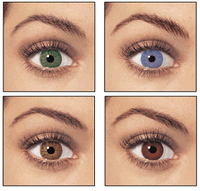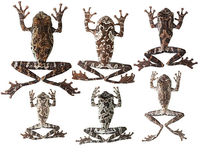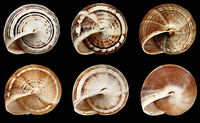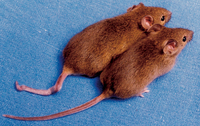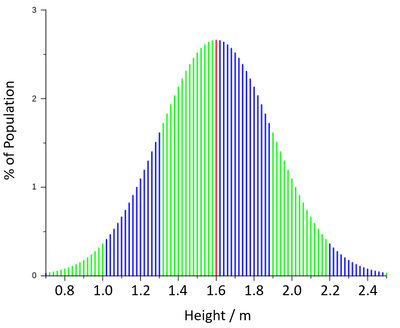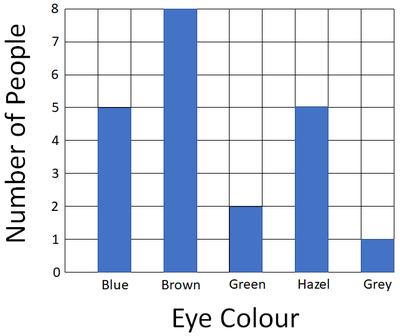Contents
Key Stage 2
Meaning
Variation is the difference between living creatures.
About Variation
- There is variation between different species; different species look different from each other.
- There is variation within a species, creatures of the same species don't look exactly the same as each other.
- Variation is useful to help a species survive. If everyone was the same, what kills one person might kill everyone.
- Variation within a species can be inherited or caused by the environmental. Some people are born with 3 fingers (inherited variation) but others might lose fingers in an accident (environmental variation).
Examples of Inherited Variation
| Eye colour varies from person to person. | The pattern on the backs of frogs shows variation. | Variation in patterns on snail shells means some are better camouflaged than others. |
Examples of Environmental Variation
| These mice are identical twins, but one has damaged its tail. The difference is an example of environmental variation. | One of these identical twins has decided to grow a mustache the other has decided to shave completely. This is environmental variation. |
Key Stage 3
Meaning
Variation is the difference between living creatures.
About Variation
- There is variation between different species; different species look different from each other.
- There is variation within a species, creatures of the same species don't look exactly the same as each other.
- Variation can be continuous or it can be discontinuous.
Continuous Variation
- Continuous variation is variation where the differences change gradually across the species.
Some examples of continuous variation are:
- Height
- Weight
- Nose Length
| This graph shows how height varies across a population of humans. |
Discontinuous Variation
- Discontinuous variation is variation where the creatures fall into specific categories where they can only be one or the other, not half way in between.
Some examples of discontinuous variation are:
- Eye colour
- Number of legs
- Ability to roll the tongue
| This Bar Chart shows the number of people in a class with each eye colour. They cannot be half way between blue and brown, so eye colour is discontinuous. |
Key Stage 3
Meaning
Variation is the difference between organisms in an ecosystem.
About Variation
- There is variation between different species; different species look different from each other.
- There is variation within a species, organisms of the same species don't look exactly the same as each other.
- Variation can be continuous or it can be discontinuous.
Genetic Variation
- Most of the variation between different species can be accounted for by the DNA differences between those species.
- Variation within a species is the result of both genetic and environmental factors.
The greater the genetic variation within a species the more likely a species will survive changes in the environment. Individuals may die, but with enough variation some of them will be better adapted to the change in their environment.
